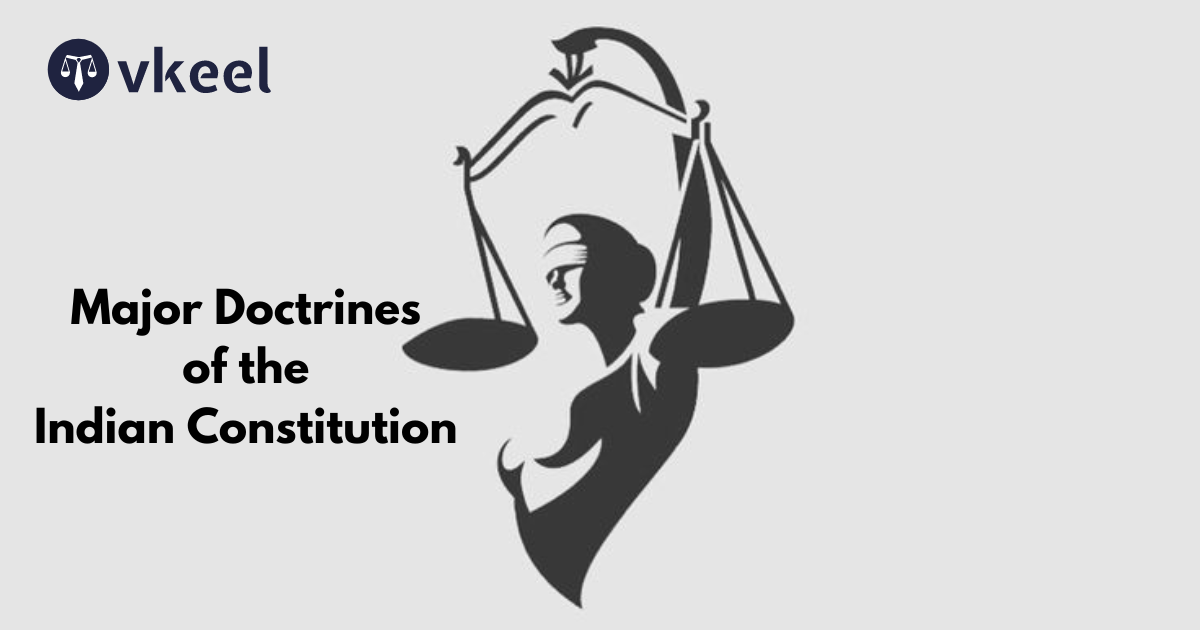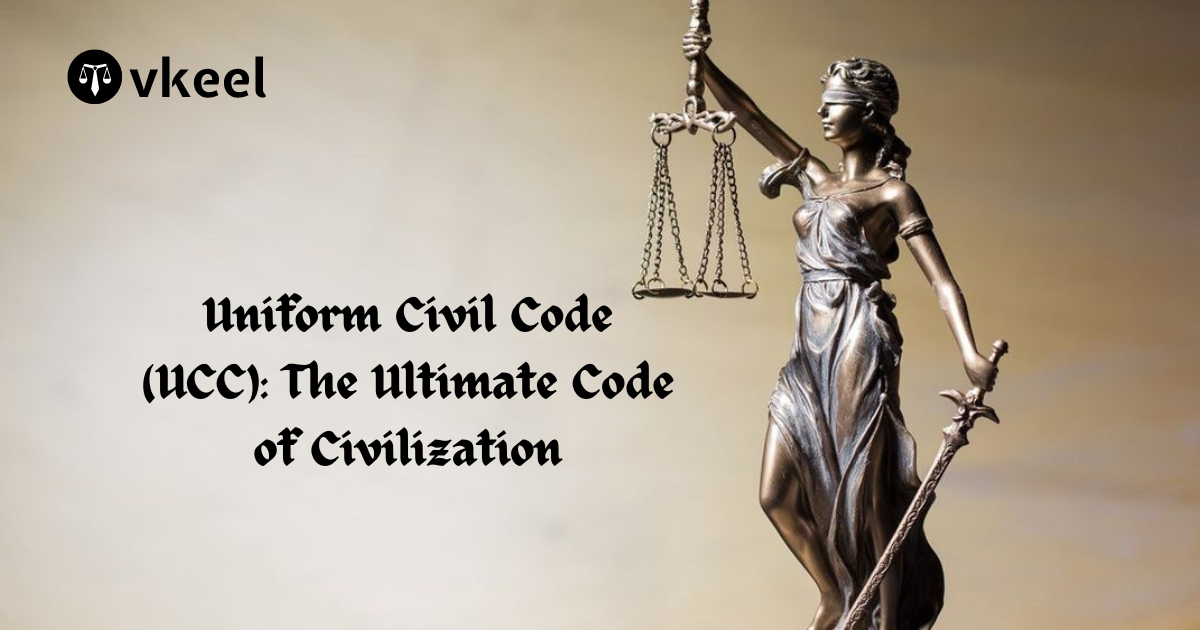Major Doctrines of the Indian Constitution
By Joy Puri
Table of Contents
Introduction
The doctrines which are entailed in the Constitution of India, represent a set of principles that serve as interpretative tools for the judiciary and other administrative authorities, guiding the application and understanding of constitutional provisions thereof.
These doctrines are not explicitly outlined in the text of the Constitution but have evolved through judicial interpretations over time by the help of the precedents and the landmark judicial pronouncements in the nation.
They consist of the underlying values and philosophies of the Constitution, such as democracy, federalism, secularism, and the protection of fundamental rights which are impliedly ordained in the Constitution of India.
The nature of these doctrines is multifaceted yet easy to follow, focusing on ensuring the supremacy of the Constitution, maintaining the balance of power between different branches of government, and safeguarding individual liberties are some of the key features of the doctrines entailed in the Indian Constitution.
One of the primary characteristics of these doctrines is their role in upholding the rule of law and constitutional supremacy and preserving the integrity of the country, thereby increasing the trust of the citizens of India in the Judiciary and judicial system of the country.
They ensure that all laws and actions of the government are consistent with the Constitutional provisions and do not violate any of the mandates, therefore preventing any arbitrary use of power in the country.
This principle reinforces the idea that the Constitution is the supreme law of the land, and any law or action contravening its provisions deemed to be invalid in the public purview or the domain.
Territorial Nexus
The doctrine of territorial nexus is a fundamental principle in the Indian Constitution that entails the scope of legislative powers of the Union and State governments, thereby stating the limitations and advancements.
This doctrine is essential in determining whether a particular law enacted by a legislature is within the ambit of jurisdictional competence, especially when the subject matter of the law has extraterritorial implications in its application.
Digging in the Indian Constitution, Article 245 empowers the Parliament to make laws for the whole or any part of India, and the state legislatures to make laws for the whole or any part of the respective states. However, Article 245(2) clearly states that no law made by Parliament shall be deemed invalid on the ground that it would have extraterritorial operation in the application.
Arriving on the landmark Judgements, in the case of Tata Iron and Steel Co. Ltd. v. State of Bihar (1958), where it was held that the state of Bihar could levy sales tax on goods manufactured within the state but sold outside the state, provided there was a territorial nexus.
The court in the aforementioned case, stipulated, To establish a valid territorial nexus, two main criteria needs to be satisfied: (i) The connection must be real and not illusory in the nature. (ii)The liability sought to be imposed must be pertinent to that connection and should possess a reasonable connection.
Harmonious Construction
The doctrine of harmonious construction is a foundational cornerstone used by the judiciary to interpret the provisions of the Indian Constitution in a way that ensures a harmonious relationship between its various parts.
This doctrine is pivotal in resolving conflicts between different constitutional provisions, ensuring that no provision is rendered redundant or meaningless by the requisite authorities. By employing harmonious construction, courts try to give effect to all the provisions of the Constitution in a balanced manner such that the harmony is maintained.
With a regardful reference to the Constitution of India, which is a complex and comprehensive document, the potential for conflicts between various articles and clauses is significant because of the huge numbers.
The doctrine of harmonious construction helps in mitigating such conflicts and helps resolving the issues thereof. It operates on the principle that the Constitution should be read as a cohesive whole, and that every provision should be given effect as far as possible without negating the effect of another in a such a manner that it does no negate the Integrity of the nation.
Doctrine of Pith and Substance
The aforementioned doctrine of “Pith and Substance” is a fundamental and the crux of the Indian constitutional law which is generally used to resolve conflicts of legislative competence between the Union and State legislatures.
The roots of this doctrine can be traced back from Canadian jurisprudence, it aids in determining whether a particular law falls within the jurisdiction of the legislative body that enacted it or not.
Under the purview and the ambit of the Indian Constitution, legislative powers are distributed between the Union and the States through three lists in the Seventh Schedule: the Union List, the State List, and the Concurrent List in the subject matter.
Disputes often arise when a law enacted by one legislature encroaches upon the domain of another in its pursuance. To address these conflicts, courts employ the doctrine of Pith and Substance.
“Pith” refers to the true nature or essence of the law, while “Substance” pertains to its actual content and impact of the law or legislation in the society. When a law is challenged, courts look beyond its superficial aspects and examine its core purpose and effects in the same way.
If the primary subject matter of the law falls within the legislative competence of the enacting body, incidental encroachments on another list do not invalidate the law for its applicability. This ensures that the substance of the legislation, rather than its incidental effects, is given precedence by the procedure or the ways established by the law.
Doctrine of Repugnancy
The aforementioned principle has been enshrined within Indian constitutional law and thereby is designed to resolve conflicts between laws enacted by the Union Parliament and State legislatures on matters enumerated in the Concurrent List of the Seventh Schedule of the Constitution thereof.
This list includes subjects on which both the Union and States have the authority to legislate concurrently, leading to potential overlaps and conflicts in jurisdiction in the matters.
Central to the doctrine is Article 254 of the Indian Constitution, which outlines the procedure for resolving such conflicts by a procedure established by law. It establishes that if there is inconsistency between a Union law and a State law on a concurrent subject, and both laws cannot coexist harmoniously, the Union law prevails ove the state law, exception to this is that if the state law attains the assent of the president, then the state law shal prevail ove the latter.
The test of repugnancy is applied by the judiciary to determine and decipher whether the two laws are irreconcilable or if compliance with one law would result in a breach of the other laws prevailing in the nation.
This assessment focuses not only on the literal text of the laws but also strives to set an eye on their practical effect and operational field of the legislations thereof.
Colourable Legislation
The doctrine of colourable legislation implies to the principle in constitutional law that addresses and marks the situations where a legislature oversteps its bounds therefore emerges out to make laws out of its ambit of sphere.
It comes into action when a legislative body enacts a law that, while appearing to fall within its jurisdiction, actually infringes upon the jurisdiction of another legislative body thereof.
Essentially, the doctrine asserts that what cannot be done directly cannot be done indirectly. This principle is backed with the very idea that a legislature cannot camouflage or disguise its true objective to circumvent constitutional limitations or any other procedure established by the law
When a law or a legislation is challenged under this doctrine, courts undertake a detailed examination to determine whether the legislative body has overstepped its constitutional boundaries or if crosses the constitutional limitations.
This involves looking beyond to the form and language of the statute to uncover its real purpose and effect and to check its true nature.
If the court finds that the legislature has, in essence, enacted a law under the guise of its legitimate power, but with the actual intent of regulating a subject outside its jurisdiction, the law may be struck down as unconstitutional by the court of law. Example section 497 (adultery)
Conclusion
The doctrines entailed in the constitution of India play a pivotal role in upholding the fundamentals of fairness, integrity, and transparency within the nation.
The doctrines are applied by the courts of law in different matters thereby enhancing implementing power and also preventing the abuse of powers by the different authorities.
Disclaimer:
The information provided in the article is for general informational purposes only, and is not intended to constitute legal advice or to be relied upon as a substitute for legal advice. Furthermore, any information contained in the article is not guaranteed to be current, complete or accurate. If you require legal advice or representation, you should contact an attorney or law firm directly. We are not responsible for any damages resulting from any reliance on the content of this website.










